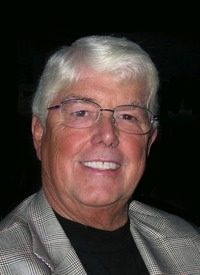
You’re a grand old flag,
You’re a high flying flag
And forever in peace may you wave.
You’re the emblem of
The land I love. The home of the free and the brave.
Ev’ry heart beats true
‘neath the Red, White and Blue,
Where there’s never a boast or brag.
Should auld acquaintance be forgot,
Keep your eye on the grand old flag.
Tell the truth now: Didn’t your pulse start beating a little faster, didn’t you sit up a little straighter, didn’t you feel a surge of pride in your country, just by reading those wonderful words?
Sure, you did.
The song has a fascinating history. Here’s how the Library of Congress explains how it came to be:
The original lyric for this perennial George M. Cohan favorite came, as Cohan later explained, from an encounter he had with a Civil War veteran who fought at Gettysburg. The two men found themselves next to each other and Cohan noticed the vet held a carefully folded but ragged old flag. The man reportedly then turned to Cohan and said, "She’s a grand old rag." Cohan thought it was a great line and originally named his tune "You’re a Grand Old Rag."
Wow, that sure doesn’t have the same patriotic sizzle, does it? One hundred and five years ago, a whole bunch of people thought so, too. The Library of Congress explanation continues:
So many groups and individuals objected to calling the flag a "rag," however, that he "gave ’em what they wanted" and switched words, renaming the song "You’re a Grand Old Flag."
Thanks, Cohan, that’s more like it.
The public heard the song for the very first time when Cohan’s musical “George Washington, Jr.” debuted on February 6, 1906, at the Herald Square Theater in New York City. Patrons left the theater singing the tune and promptly made it the most popular song in our history. Sheet-music sales alone surpassed 1 million copies — the equivalent of going quadruple-platinum today.
While the song has remained a huge hit for more than 100 years, the musical in which it first appeared has almost totally disappeared. I could not find any indication that “George Washington, Jr.” has been performed anywhere in the past 50 years. That’s too bad, because the plot sounds as though it would make a good TV drama today.
It concerns a U.S. Senator who wants a niece to “marry up.” So he’s arranged a marriage with a man who claims to be of European royalty. However, the Senator’s teenage son discovers the so-called count is not only a fake, but an international criminal. After much travail, the son saves his father’s reputation and his cousin’s virtue. Hurrah!
OK, I’ll grant you, it does sound a bit hackneyed and clichéd. So forget about that musical. Instead, I have another one I want to recommend to you: A classic black-and-white movie about the guy who wrote the play. It’s called Yankee Doodle Dandy. And if you’ve never seen it, you must.
This is the delightful and infectious movie that Hollywood made in 1942 about Cohan’s legendary life. As you can imagine, coming just as World War II was getting underway, the film bursts with patriotism.
To the surprise of many, America’s favorite gangster, James Cagney, was cast in the starring role. And what an incredible hoofer he turned out to be! If you’ve never seen Cagney singing and dancing, you’ll be amazed how good he is.
His colleagues in Hollywood agreed, because they gave him the Best Actor Oscar for 1942. The film also won Oscars for Best Musical Score and Best Sound Recording. It was nominated in five other categories. Imagine, there was a time when Hollywood honored patriotism. Hard to believe, isn’t it?
The film is a winner. But don’t take my word for it. Instead, go to your local video store and rent it. Or better yet, go to Amazon.com and buy a copy. If you have a drop of patriotic blood in your body, you will love it, too. And you will want to enjoy it again and again.
But believe it or not, watching “Yankee Doodle Dandy” isn’t my No. 1 recommendation for celebrating your patriotism. For that, I have an even simpler suggestion: Fly the flag. And especially, fly the flag a week from Tuesday, on Flag Day.
Why June 14? That is the day in 1777 when the Second Continental Congress adopted the Stars and Stripes as our national flag. Flag Day was first proclaimed by former President Woodrow Wilson in 1916. Strangely, Congress did not officially proclaim Flag Day for 33 years; it was not until August 1949 that National Flag Day was established by an Act of Congress.
Flag Day is not a national holiday. But it is a state holiday in Pennsylvania. Good for you, Pennsylvanians.
Chip Wood was the first news editor of The Review of the News and also wrote for American Opinion, our two predecessor publications. He is now the geopolitical editor of Personal Liberty Digest, where his Straight Talk column appears weekly. This article first appeared in PersonalLiberty.com and has been reprinted with permission.


